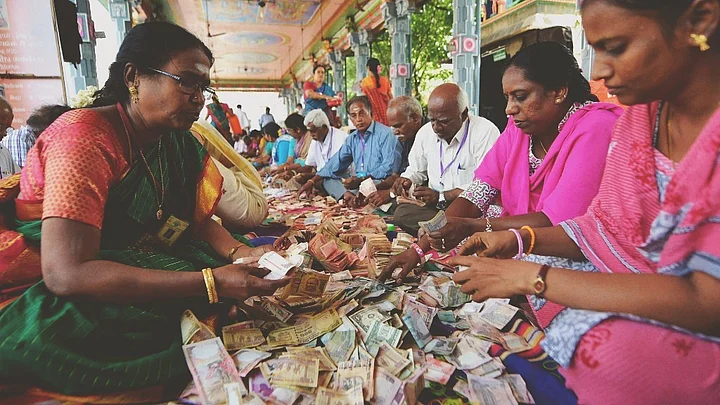Three weeks after the government decided to demonetise or invalidate Rs 500 and Rs 1,000 currency notes, data on cash deposits offers early leads on the progress of one of the largest currency replacement exercises across the world.
The data, once complete, may also help answer a much debated question – what part of India’s cash economy was also part of the black economy?
Based on various studies, it has been broadly assumed that India’s parallel or ‘black’ economy is roughly a quarter of India’s gross domestic product. Bank of America-Merrill Lynch estimates the numbers as below:
- India’s Nominal GDP (estimate): Rs 15,17,81,00 crore
- Black Economy (25 percent of GDP): Rs 37,94,530 crore
- Cash Black Economy (10 percent of black economy): Rs 3,79,450 crore
These estimates and other similar assumptions on the proportion of black money in cash will be tested against the amount of invalidated currency that does not come back into the banking system by the end of the demonetisation exercise on 30 December.
The rationale is that unaccounted cash will not be deposited for fear of prosecution by tax authorities, giving an indication of how large the black cash economy was.
As of Monday the Reserve Bank of India (RBI) had released data only for the period between 10-27 November. And while it’s too early to conclude on the success of demonetisation in helping identify and extinguish black money, the data does set up goal posts to watch for.
According to the RBI, Rs 8.45 lakh crore have been deposited in banks in this period. This is about 54.6 percent of that portion of currency in circulation that was invalidated (Rs 15.45 lakh crore) by the cancellation of Rs 500 and Rs 1,000 notes.
To this, it would be prudent to add the cash that was already lying in currency chests of banks, since this is already in the banking system and some portion of this would also have been invalidated. This number – cash held by banks – can be arrived at by subtracting currency with public from currency in circulation.
For the fortnight ended 11 November, the amount of currency with banks was Rs 2.5 lakh crore. However, this is an unusually high number, mostly due to a surge in currency deposits right after the currency ban was announced. On average, in the past year, banks have held currency worth Rs 70,000 crore, for instance as of the fortnight ending 28 October, the amount was Rs 75,000 crore. Assuming that 86 percent of this amount (the ratio of banned currency) has been invalidated, banks are likely holding about Rs 64,500 crore in Rs 500 and Rs 1,000 notes.
Add the deposits of old currency (Rs 8.45 lakh crore) to the invalidated currency with banks and it’s clear – in the first three weeks since Prime Minister Modi announced the war on black money, 59 percent of the cancelled currency is already back with the banking system.
If a large part of the remaining 41 percent comes back by December-end, questions will be raised about whether the demonetisation exercise was worth the short term pain.
There are, of course, gaps in this rationale.
For one, those holding unaccounted cash could find means to deposit money without being detected. An example of this is the surge in deposits in Jan Dhan accounts. Rs 27,000 crore was deposited in these accounts in the first two weeks after demonetisation, suggesting that there may be distribution of unaccounted deposits across these accounts.
Second, the government on Monday announced another income disclosure scheme. This scheme allows citizens to deposit unaccounted cash in return for effective tax and penalties equal to 50 percent of the undisclosed income, while another 25 percent would be locked-in for four years. For any one availing this scheme, the tax department will not question the source of this income, said Hasmukh Adhia, revenue secretary, government of India.
Factors such as these may allow a part of the unaccounted deposits to come into the banking system and prevent a clear assessment of how much black money in cash there was to begin with and whether the demonetisation exercise has managed to snuff out a part of it.
(This article was first published on BloombergQuint)
